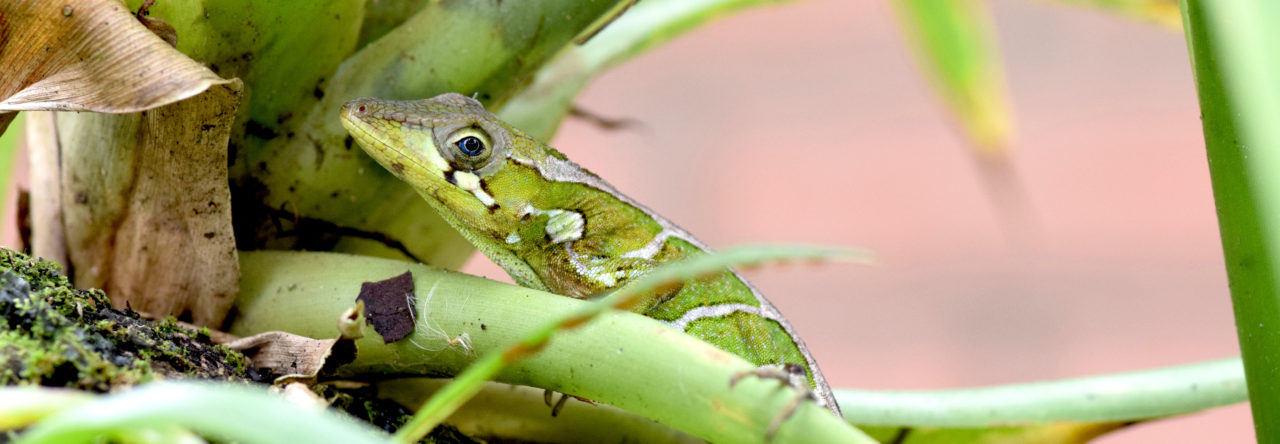
Distribution records for Anolis cristatellus in Costa Rica reported in 2011 AA post.
Four years ago, we reported on the distribution of the Puerto Rican crested anole all along the Caribbean coast of Costa Rica. We also found the species inland, as far west as Turrialba and Siquerres, but not Guapiles (see map to right). A year later, we returned for a quick follow-up as part of a herpetology course spring break trip to Costa Rica. The weather wasn’t great and we failed to find cresteds in any place not previously reported; however, observations of brown basilisks, another sun-loving species, suggested that the weather was suitable enough, and that perhaps the absence of the anoles was real.
Two years later, this past March, another herpetology class trip ensued, and so another expedition was launched to Guapiles and environs. The team included AA correspondent Katie Boronow, an award-winning senior with expertise on A. cristatellus, and a sophomore in training for Miami field work this summer (more on them in posts to come).
And the results???










